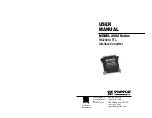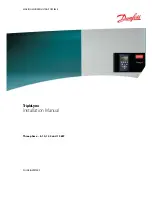
45
ABCN H1H2E PQE
ABCN H1H2E PQE
ABCN H1H2E PQE
L N PQE ABCDE
L N PQE ABCDE
L N PQE ABCDE
Branch
box
Branch
box
Branch
box
Branch
box
ABCDE
ABCDE
ABCDE
Power
wire
Communication
wire
Power
wire
Power
wire
Power
wire
Power
wire
Power
wire
Power
wire
Power
wire
Power
wire
Power
wire
Communication
wire
Communication
wire
Communication
wire
Communication
wire
Communication
wire
Communication
wire
Communication
wire
N
C
B
A
Wired
controller
terminals
Wired
controller
terminals
Wired
controller
terminals
Outdoor
unit
terminals
Outdoor
unit
terminals
Outdoor
unit
terminals
Indoor
unit
terminals
Indoor
unit
terminals
Indoor
unit
terminals
10
Installation
in
Areas
of
High
Salinity
10.1
Caution
Do
not
install
outdoor
units
where
they
could
be
directly
exposed
to
sea
air.
Corrosion,
particularly
on
the
condenser
and
evaporator
fins,
could
cause
product
malfunction
or
inefficient
performance.
Outdoor
units
installed
in
seaside
locations
should
be
placed
such
as
to
avoid
direct
exposure
to
the
sea
air
and
additional
anticorrosion
treatment
options
should
be
selected,
otherwise
the
service
life
of
the
outdoor
units
will
be
seriously
affected.
Air
conditioning
installed
in
seaside
locations
should
be
run
regularly
as
the
running
of
the
outdoor
unit
fans
helps
prevent
build
‐
up
of
salt
on
the
outdoor
unit
heat
exchangers.
10.2
Placement
and
Installation
Outdoor
units
should
be
installed
300m
or
more
from
the
sea.
If
possible,
well
‐
ventilated
indoor
locations
should
be
chosen.
(When
installing
outdoor
units
indoors,
outdoor
unit
discharge
ducts
should
be
added.
See
Installation
Manual,
3
“Outdoor
Unit
Ducting
and
Shielding”.)
Refer
to
Figure
3
‐
10.1.
If
it
is
necessary
to
install
outdoor
units
outside,
direct
exposure
to
the
sea
air
should
be
avoided.
A
canopy
should
be
added
to
shield
the
units
from
sea
air
and
rain,
as
shown
in












































